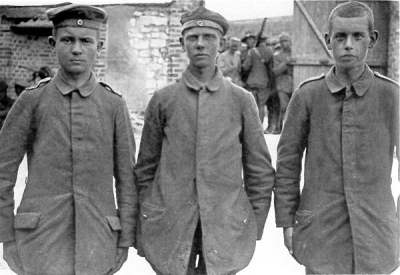
The Darian Militia
-under construction-
(Excerpts from Osprey #4670015- Kuati House Militias)
The Wars of Unification and the Hegemony
In contrast to the militias of other Great Houses, the Darian Militia was always, since its inception during the chaotic Wars of Unification, primarily an infantry force. There was an attached artillery train, and from ca.250 HR onward, the militia used tracked APCs, but the mass of the troops were infantrists. At the start of the Long Wars, the Darian militia consisted of three divisions with integral divisional artillery train, plus two additional, unattached regiments. 1st Division was a motorized unit, while 2nd and 3rd were light infantry. Of the unattached regiments, the first, Darian Home Guard Regiment, started out as an elite regiment charged with the protection of the senior members of the house, the Darian valley area and House Darians assets in the Kuat system. As the wars ground on, the Home Guard's rank were more and more filled with those too old or unfit because of light disabilities for frontline service. Only 1st bataillion, the security detail for the House Lords, retained their elite status beyond the first few decades of the Long Wars. The second regiment, Darian 1st Embarked, provided boarding troops for the House Fleet and was split into company or smaller sized detachments on House Darians major capital ships.
As losses began to mount, especially among the raw recruits sent immediately to the front, March Battaillions were created in 427 HR, one for every regular regiment, to train the raw troops recruited in the Darian valley. They were numbered the same as their parent regiments, with March Battaillions 1 through 4 for 1st Division, and so on. Late in the Wars, after the defeat at Antaria, those too were committed to the front and fought as an understrength 4th Division.

Fig.1 Soldiers of MBaon 32, ca. 850 HR
After the first phase of the wars, when the earlier war of movement and rapid flanking maneuvers had bogged down into a seemingly endless war of attrition, the requirements of trench warfare forced the Kuati Houses to add special units, trained for trench fighting, to their regular units. From 603 HR onward, there were two Storm Battaillions attached to every division, the first in each division numbered as their parent division, the second with a number increased by 10, so 3rd Division was accompanied by StBaon 3 and 13.
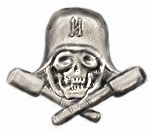
Fig.2 Iron clasp for StBaon 5
A second modification to the order of battle was the addition of heavy weapons companies, one per regiment. Since the Wars of Unification, every company had one heavy projectile weapon assigned to it, usually either an auto-railgun or a heavy autoblaster, the ancestor of todays e-web. But early experiences in trench warfare had shown the decisiveness of heavy autofire against frontal assaults. The heavy weapons companies thus were used to strengthen key positions along the line.
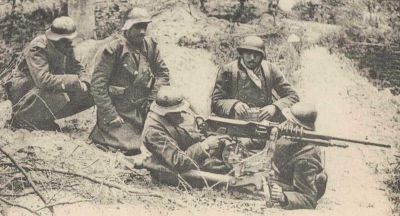
Fig.3 Darian militia with heavy autoblaster, ca. 600 HR
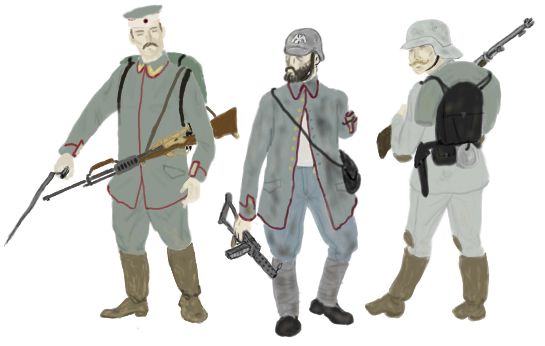
Table I Darian Militia, Long Wars Era
Left: Light Infantry Waybel (NCO), 420 HR, discernible by the gold brackets on his collar. He is wearing the Type 4 standard uniform issued at the beginning of the Long Wars with a canvas cover over the red band of his cap cut out to show the House sigil. He is carrying a single-shot Werdt blaster rifle with an obsolete M27 bayonet, a relic of the Wars of Unification that continued to be used in the first half of the 5th century HR. Center: Disabled Home Guard soldier, 600 HR, wearing an old Type 5 tunic with pike grey Fleet type pants and the Type 1 light helmet issued from 572 HR onward. Due to supply difficulties, some units wore laced boots with puttees instead of the usual jackboots. The cartridge pouch is also not regular issue, but probably privately bought. Due to his missing arm, this soldier was unable to fire a blaster rifle, so he was issued a M12 projectile autocarbine, a relic of the early Expansion era that went out of regular issue around 220 HR, but a few of those primitive but efficient weapons were kept in storage and continued to crop up in small numbers until the Bloody Winter of 917 HR. Right: Storm Battaillon trooper, 900 HR, wearing the Type 7 uniform with leather knee and elbow pads. His helmet is of the new Type 3 introduced in 897 HR. The field pack has not changed since the Wars of Unification, but now the belt is attached to it by leather loops. Fastened to the pack is his blanket and bowl. He is armed with a sheathed M88 short bayonet and the 8-shot Horth-Feali blaster rifle. During an assault he would replace the field pack with slung canvas bags of grenades.
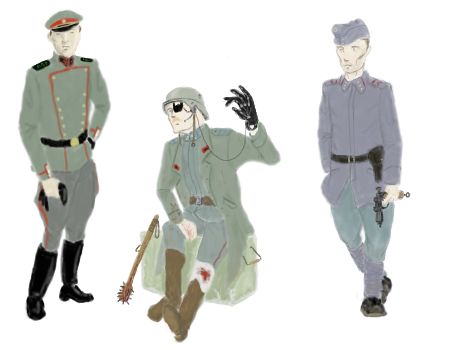
Table II Darian Militia Officers, Long Wars Era
Left: Leftenant, 1st Baon Home Guard, 420 HR. Officers usually bought their own uniforms and gear, of better quality than regular issue, but leading to an even wider variation of shades in uniforms. Note the nonregular doublebreasted tunic. The cap is of the old Type 3 that continued to be worn in garrison and even in the field years after it was supplanted by the less flashy Type 4 in 416 HR. The rest of the gear is patterned after regulation issue, only of better quality. Center: Kaptan, 5th Darian Rgt., 780 HR. He is wearing the simplified Type 6 uniform, which was, due to material shortages, issued in a variety of shades from light grey (like the Type 7), over the more traditional field grey to olive green (from captured Coruscani stock), and the short winter coat (without the fur collar). Due to the lack of colored cloth, rank and unit insigia were reduced to stripes on the collar in 720 HR. The leatherwork is natural brown. At that stage of the war, few soldiers took the time any more to blacken it with polish. Buttons and belt buckles of gold and brass (for officers and troops, respectively) had been replaced by steel after the 650s. He is wearing the Treimer-Beck tactical helmet with the appendant glove, an invention that resulted in four decades of Kuati military successed, until the advent of truly portable taccomps with holo display. He is armed with a trench mace, an especially feared weapon manufactured in the field from pipes, wood, bolts and nails. The Duro were so shocked by its success that they ordered their troop to shoot every Kuati soldier carrying one, even if he surrendered. Right: Fenrich, 1st Embarked, 917 HR. For reasons of easier supply, Embarked troops wore Fleet-style pike-grey, but cut like regular Militia uniforms. That late in the Wars, most Kuati troops looked as shabby and malnourished as the Fenrich. Many uniforms were threadbare and patched, made from substitute materials of lesser quality. The Embarked troops, due to their association with the Navy, got higher priority for replacement materials, but often had to make do with what they could scrounge from old stores and civilian warehouses. Our man here has old Type 6 pants, a civilian belt, and workboots also of civilian make, worn with puttees made from leftover Naval uniform fabric. The new Type 8 field cap was introduced in 912 HR, but due to the supply situation by the end of the Wars only 70% of the men had received it. He is armed with a Gorten M98a 7-shot blaster pistol, a cheaper version of the M98 introduced in 802 HR, with wooden grip and some parts manufactured from steel instead of more advanced and sturdy alloys.
Armored Vehicles of the Long Wars Era Darian Militia
In contrast to the other nations of the Long Wars, the only ground vehicles the Kuati fielded were relatively slow, tracked models. The reason for this lies in the Kuati emphasis on fighters (athmospheric only, this was long before the inception of the starfighter) and gunboats for heavy fire support. While those vehicles were generally slow (some extremely so), they were cheap, more heavily armored than the repulsorlift vehicles of the time and far better in crossing the churned-up no-mans-land than walkers or wheeled vehicles.
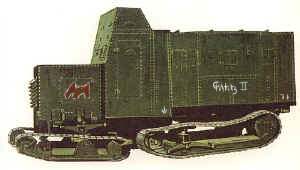
Fig.1 The Remer Mk.I Tractor
The first armored vehicle delivered to the Darian militia in 249 HR, it was designed to pull repulsorlift-assisted artillery- heavy blasters, mortars and missile launchers and could carry additional ammunition in the back. Soon some were refitted to carry troops, too. Crewed by 2 men, it could carry 8 men in its cramped, stuffy hold. With a top speed of 12 kph, the Remer was extremely slow, but well-armored and easy to repair under field conditions. Upgraded versions continued to serve into the 620s.
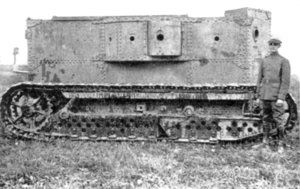
Fig.2 Unarmed Ferst V7 Prototype
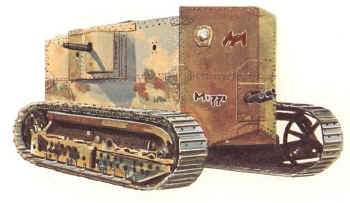
Fig.3 Ferst V7A
In 405 HR, due to the increasing tensions, development on an armed vehicle to augment the aging Remer tractor was started. The first vehicles were delivered in 408 HR. Marginally faster, at 16 kph offroad and up to 24 kph on good roads, it was armed with a medium blaster in front and two autoblasters mounted at the sides. Requiring a crew of 6, it could transport up to 4 men with full gear, albeit under extremely cramped conditions.
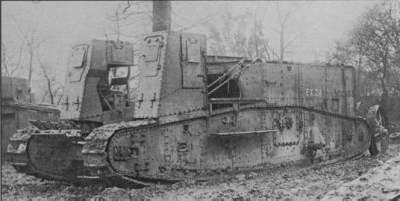
Fig.4 Andl R9 APC
In the 550s, the Remer Mk.III, a slightly improved upgrade of the original Mk.I, had become completely obsolete. The military revieved prototypes by Remer Industries, Andl Transport and Stoich Arms, but none were satisfactory. At last, Andl presented their R9, which represented a radical departure from the small tracked vehicles proposed earlier. At over 8 meters long, it could transport up to 24 men with a crew of 4. Nominally unarmed, the men transported could fire from various hatches and ventillation slits. The first Kuati vehicle with independently powered tracks, it had a top speed of 21 kph in th field.

Fig. 5 Suven-Remer LP3
In 712 HR, the Autarch ordered High Command to find a way to reduce the apalling casualties Kuati troops suffered, especially in urban fighting, where the Militias could not exploit their aerospace superiority. OKM's answer was the adoption of a few tactics, the introduction of the hardened steel alloy Type 2 helmet and the Suven-Remer LP3. It was a fast, well-armored vehicle able to scout in urban terrain and lend support to infantry and reach hot spots quickly. Battle steel armour up to 32mm thick, a heavy autoblaster and engines allowing a top speed of 35 kph were crammed into a very small package. The price for it was paid by the crews. Men taller than 165 cm were unable to fit into the cramped crew compartment. When not in combat, the commander usually rode outside on top, to give the driver and gunner more breathing space. Also, the narrow tracks hindered offroads performance. The SRLP3 was very successful in its intended mission, but due to its weaknesses was never widely adopted.

Fig.6 Donos 'Volken' APC
Adapting the concepts introduced by the SRLP3, Donos Electrics started developing the 'Volken' in secret in 726 HR. It was presented to the Autarch after only 16 months and immediately adopted by most Militias. Only slightly slower than the SRLP3 with 33 kph, its offroad capability was far better. It required a crew of 3 and was armed with an autoblaster. Able to carry 6 men, it augmented and ultimately supplanted the R9.
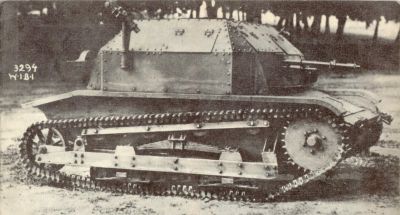
Fig.7 Ferst-Jacha VF19
The last Hegemony fighting vehicle to be developed before dwindling resources forced concentration on naval building, the VF19 was introduced in 778 HR. While intended for a similar mission profile as the earlier SRLP3, the VF19 was a far better offroad vehicle and served on almost every front. Armed with a heavier version of its predecessor's autoblaster and capable of reaching 34 kph, its crew of 3 was better protected by the new 38 mm augmented battle steel armor, under less cramped conditions. At the beginning of the 10th century, all of these remarkable vehicles had been used up, except for a handful of damaged units that had been rebuilt into gun tractors earlier and were hurriedly refitted as makeshift fighting vehicles during the Bloody Winter of 917 HR.
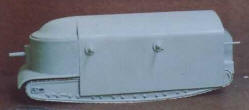
Fig. 8 'Tunor' model in the Industrial Museum, Kuat
In 842, Remer Industries, Stoich Arms and Donos Electrics combined their efforts to develop a new heavy fighting vehicle for the Militias. The Tunor Project never advanced beyond the planning stage. With the need for battle steel and weapons for warship and fighter construction after the terrible losses of Second Brentaal, there were no resources to spare for even one prototype. Almost as large as a modern Juggernaut, with heavy 62mm armor, a medum blaster and 6 heavy autoblasters, the 'Tunor' was designed to be a mobile stronghold. Sadly, he would have been only slightly more maneuverable than a duracrete bunker, with a projected speed of 17 kph. Its weight would have been distributed by four tracks, the middle pair raised for road travel.